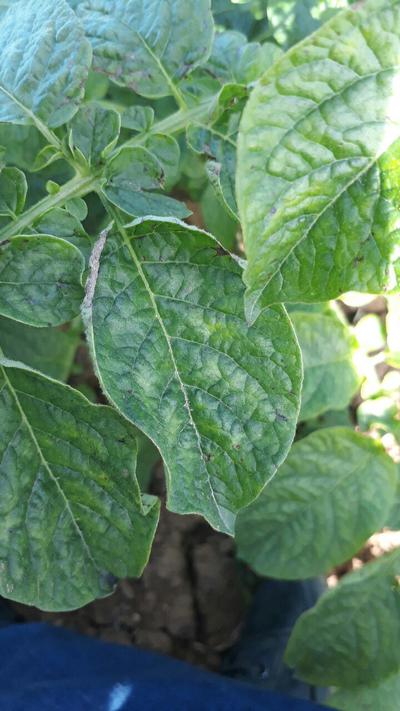Potato Y Virus
PVY
Virus
In a Nutshell
- Yellow to dark green mosaic pattern on leaves - starting from the tip.
- Black necrotic spots and lines on leaves and shoots.
- Stunted growth.
Can also be found in
Symptoms
Symptoms of infection vary with varieties, plant age and environmental conditions. Yellow to dark green mosaic patterns appear on leaf blades, giving them a mottled and deformed aspect, often starting from the tip. Brown to black lines and round spots of dead tissue material emerge on leaf veins and shoots. Buds and blossoms do not develop further. Tubers from infected plants are small and can have necrotic or dead rings on the skin. The whole plant's growth is compromised and the crop yield is diminished.
Recommendations

Organic Control
Weekly applications of mineral oil can reduce virus spread. It slows the uptake of the virus by the aphids and modifies their eating behavior, making them less prone to infect plants

Chemical Control
Always consider an integrated approach with preventive measures together with biological treatments if available. Chemical treatment of viral diseases is not possible. However, insecticides can be used to reduce the population of aphids
What caused it?
The virus is highly infective. It mostly hits plants of the solanaceous family, like tomato, potato and pepper. It spreads via a variety of winged aphids, infested plant material and contaminated tools.
Preventive Measures
- Plant only certified seeds.
- Choose tolerant or resistant varieties.
- Monitor the field and remove/destroy all infected plants.
- Do not plant potatoes near susceptible hosts.
- Get rid of weeds or unwanted potato plants from previous crops in and around the field.
- Avoid injuries to plants.
- Disinfect your tools.
- Destroy overwintering sources of virus, for example cull piles of potatoes.



